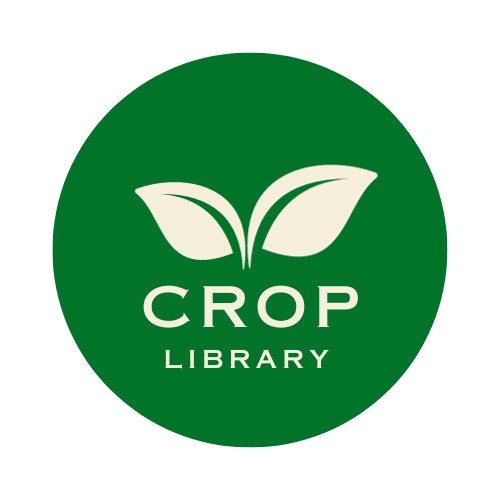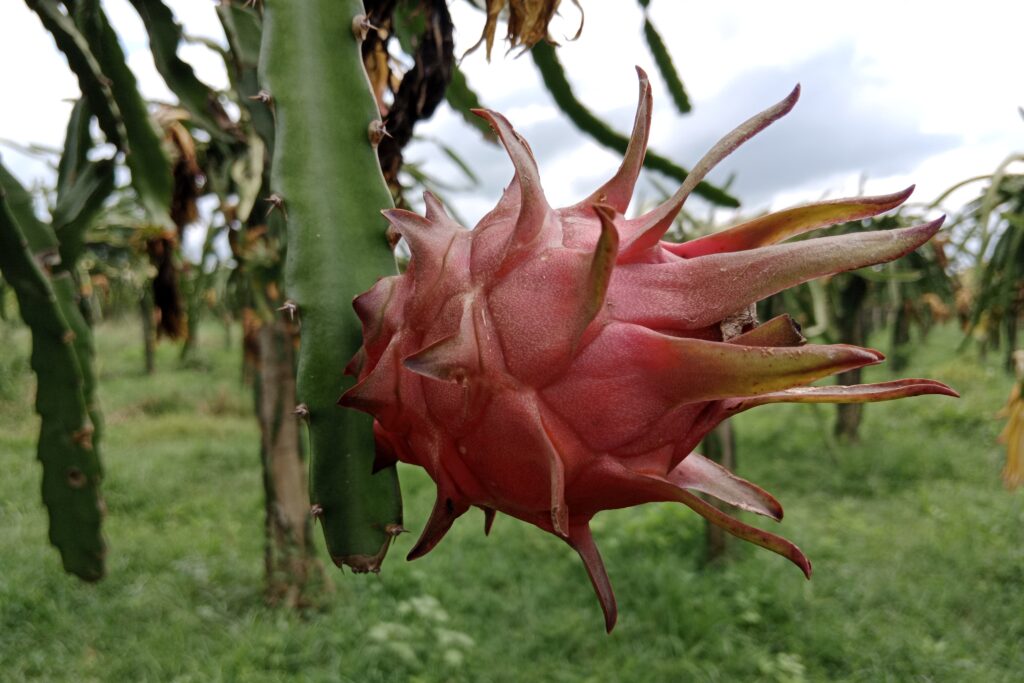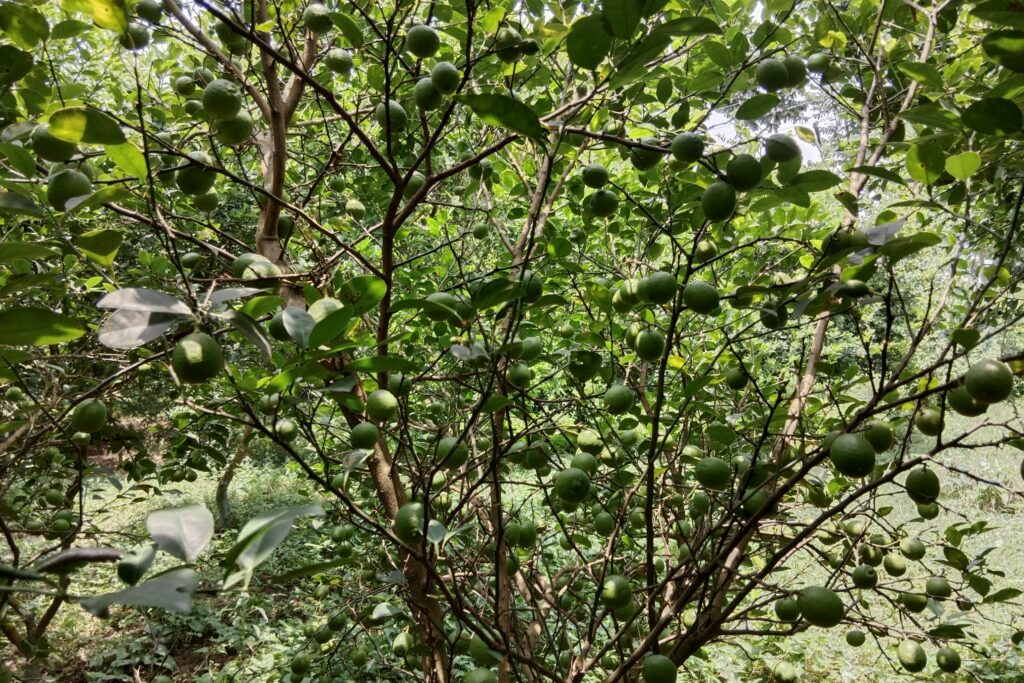Custard Apple Cultivation
Custard apple cultivation revolves around the tropical fruit tree Annona squamosa, commonly known as sugar apple or sweetsop, which is highly valued for its sweet, creamy, and aromatic fruit. Often regarded as a delicacy of dry regions due to its exceptionally sweet and delicate flesh, the custard apple thrives as a deciduous or semi-deciduous woody shrub, reaching heights of 5-6 meters with irregularly spreading branches.
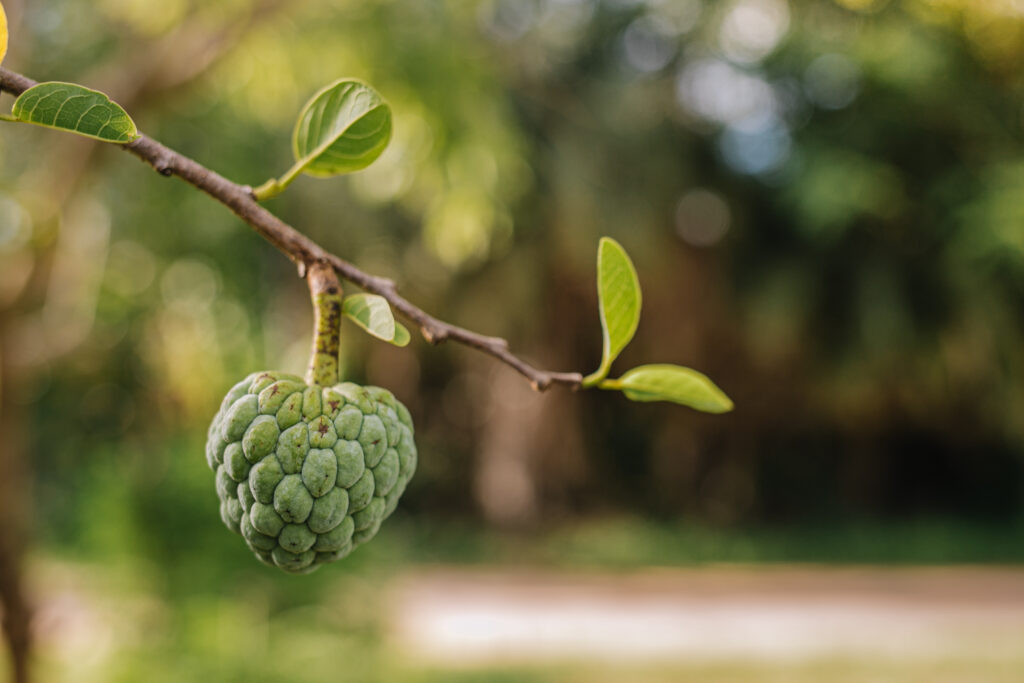
Beyond its delightful taste, the fruit is a nutritional powerhouse, rich in carbohydrates (primarily sugars at 23.5%), protein, calcium, phosphorus, and iron, making it a valuable crop for both culinary and health benefits.
Land Preparation
Land preparation is a critical first step in ensuring the successful cultivation of crops, as it sets the foundation for healthy plant growth. The process begins with clearing the field of weeds, debris, and any leftover agricultural residues to create a clean and fertile environment. Once cleared, the field should be thoroughly ploughed and leveled to promote adequate soil aeration and drainage, which are essential for root development and overall plant health.
In areas prone to waterlogging or with inadequate drainage, raised beds or ridges can be prepared to prevent excess water accumulation around the roots, which could otherwise harm the plants. Additionally, pits measuring 60 cm³ should be excavated to facilitate proper planting and provide ample space for root expansion. This meticulous preparation ensures optimal growing conditions, paving the way for a healthy and productive crop.
Soil Type
Well-drained, sandy loam or loamy soils that are high in organic matter and have a pH between 6.0 and 7.5 are suitable for custard apple growth. They should not be used in thick clay or wet soil because these conditions can lead to root rot. As long as the soil is well-drained, the crop can grow on shallow soils and even saline soils.
Climatic Requirements
| Aspect | Details |
| Climate | Warm, tropical, or subtropical settings |
| Ideal Temperature Range | 25°C to 35°C |
| Cold Sensitivity | Vulnerable to frost; cannot tolerate extended cold |
| Preferred Conditions | Mild winters and warm, humid climates |
| Drought Tolerance | Drought-resistant once established |
| Ideal Rainfall | 600–1,000 mm annually |
| Elevation Range | Sea level to 1,000 meters above mean sea level |
| Adaptability | Can thrive at various elevations within the ideal climate range |
Major Cultivars
Popular cultivars include:
| Cultivar | Characteristics |
| Balangar | Known for its high yield and excellent fruit quality. |
| Arka Sahan | Drought-resistant, making it well-suited for cultivation in dry regions. |
| Red Sitaphal | Distinguished by its reddish fruit skin and sweet, flavorful taste. |
| Local Varieties | Many regions have their own locally adapted cultivars, tailored to specific climatic and soil conditions. |
Planting
Well-established grafts should be planted in the center of the pit to ensure proper root development and optimal growth conditions.
| Aspect | Details |
| Planting Season | March to September, with the monsoon season being ideal for moisture and establishment. |
| Spacing | 5 m by 5 m apart; staking is recommended to support plants and prevent lodging. |
| Pit Preparation | Dig pits measuring 60 cm (length, width, depth). Fill with a mix of topsoil and 10 kg of compost. |
| Planting Method | Place the sapling in the center of the pit, cover the root ball with soil, and water thoroughly. |
| Plants per Acre | Approximately 162 plants can be accommodated per acre. |
Intercropping
| Season | Intercropping Practices | Considerations |
| Rainy Season | Ideal for intercropping with short-duration crops like legumes, vegetables, or pulses. | These crops thrive in moist conditions, maximizing land use and generating additional income. |
| Winter Season | Suitable for growing companion crops such as legumes and pulses. | Cooler temperatures and adequate moisture support the growth of intercrops without resource strain. |
| Summer Season | Avoid intercropping with tall or aggressive crops. | Such crops compete for nutrients, water, and sunlight, hindering the growth of young custard apple trees. |
| General Tips | Seasonal planning ensures optimal resource utilization and enhances farm productivity. | Choose intercrops carefully to avoid competition and support the healthy growth of custard apple trees. |
Irrigation
While mature custard apple trees are drought-tolerant, they still need to be watered during dry spells, especially when they are flowering and developing fruit. Young custard apple plants need frequent watering to have strong roots. Avoid overwatering in order to avoid root rot. Due to their poor water retention, sandy soils require more frequent watering, while clay soils hold moisture for longer.
Waterlogging should be avoided by reducing irrigation during rainy seasons and increasing it during hot, dry ones. Mulching helps control soil temperature, prevent weed growth, and preserve moisture. By supplying water straight to the roots and reducing waste, drip irrigation is an effective technique. Adjust irrigation according to growth stage, soil type, climate, and local conditions, and always use high-quality water to prevent salinity problems.
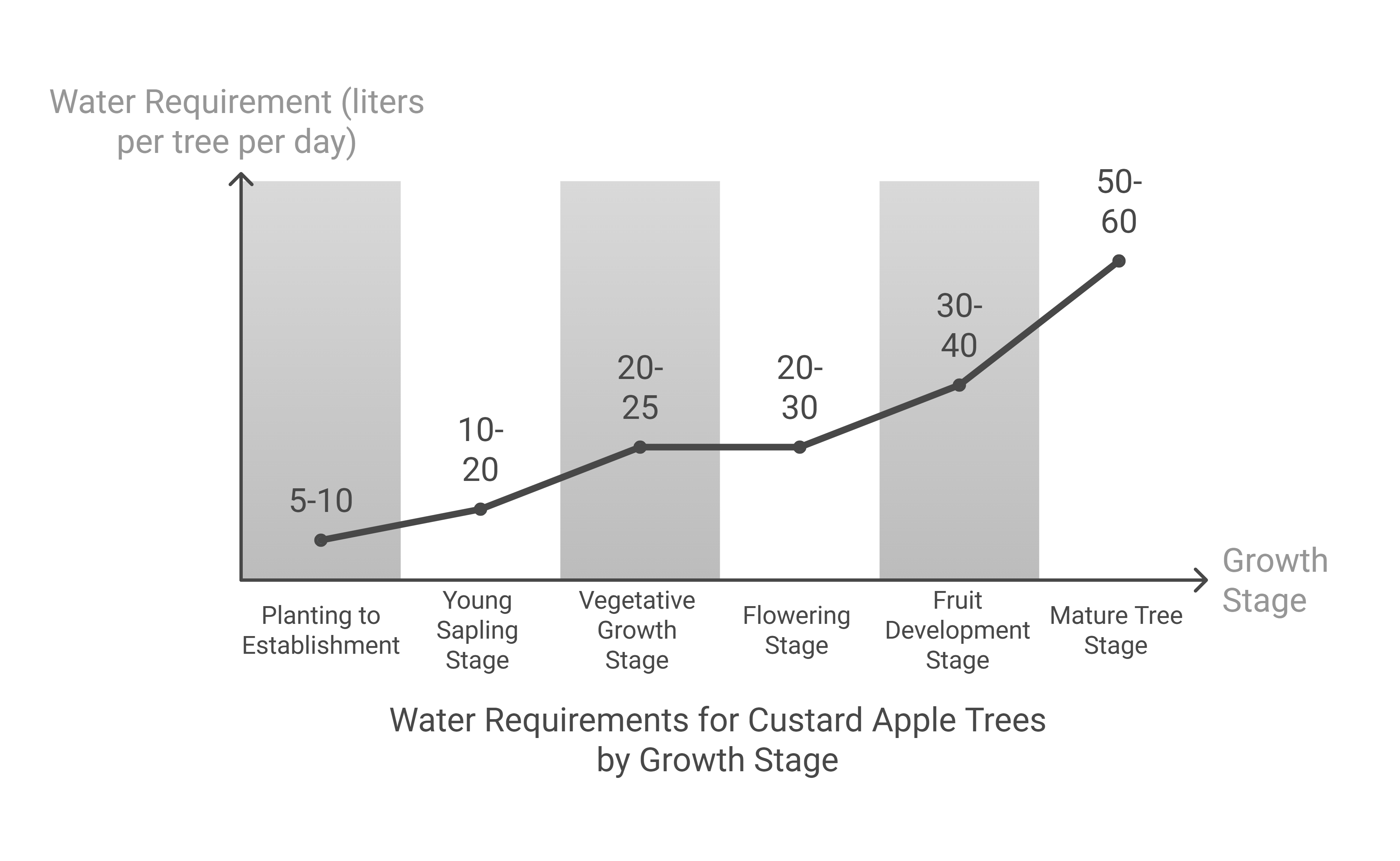
Water Requirements by Growth Stage
a). Planting to Establishment (0–3 months after planting)
Five to ten liters of water per tree per day are needed throughout the initial planting to establishment period, which lasts for 0 to 3 months following planting. The soil must be kept damp but not soggy because this stage is essential for optimal root establishment and lays the groundwork for future growth.
b). Young Sapling Stage (3–12 months after planting)
During the young sapling stage (3–12 months after planting), custard apple trees require 10–20 liters of water per tree per day, with irrigation every 3–4 days. As the root system develops, water should be increased gradually, and mulching is recommended to help retain soil moisture and support healthy growth.
c). Vegetative Growth Stage (1–3 years after planting)
During the vegetative growth stage (1–3 years after planting), custard apple trees require 20–25 liters of water per tree per day, with irrigation every 4–5 days. It is important to water deeply to promote deep root growth, while reducing the frequency during the rainy season to prevent waterlogging and ensure optimal development.
d). Flowering Stage (3–4 years after planting)
During the flowering stage (3–4 years after planting), custard apple trees require 20–30 liters of water per tree per day, with irrigation every 5–7 days. Consistent moisture is crucial during this stage to support healthy flowering and proper fruit set, ensuring optimal yield and quality.
e). Fruit Development Stage (4–5 years after planting)
During the fruit development stage (4–5 years after planting), custard apple trees require 30–40 liters of water per tree per day, with irrigation every 7–10 days. It is essential to avoid water stress during this critical phase, as it can lead to fruit drop, making adequate irrigation vital for ensuring healthy fruit growth and a successful harvest.
f). Mature Tree Stage (5+ years after planting)
During the mature tree stage (5+ years after planting), custard apple trees require 50–60 liters of water per tree per day, with irrigation every 10–14 days. While mature trees are drought-tolerant, providing sufficient water is essential to maintain high yield and ensure optimal fruit quality.
Fertilizer and Manure
When planting custard apple plants, start with 10 kg of manure per tree and raise it by 15% per year. Every two to three years, test the soil to guarantee proper nutrient management, and then modify fertilizer dosages in accordance with the findings. Around the tree canopy, fertilizer should be spread out in a circular trench, mixed well with the soil, and then watered properly.

Incorporate organic substitutes like compost, vermicompost, or biofertilizers in addition to chemical fertilizers for sustainable practices. Depending on geographical conditions, climate, and soil fertility, the general fertilizer requirements shown below may change.
Fertilizer Requirements for Custard Apple
a). 0–6 months after planting
During the first 0–6 months after planting, custard apple trees require 100 g of nitrogen (N), 50 g of phosphorus (P), and 100 g of potassium (K) per tree annually, applied in three equal split doses to ensure balanced nutrient supply and support early growth.
b). 6–12 months after planting
During the 6–12 months after planting, custard apple trees require 150 g of nitrogen (N), 75 g of phosphorus (P), and 150 g of potassium (K) per tree annually, applied in three equal split doses to ensure consistent nutrient availability and promote healthy development.
c). 1–3 years after planting
During the 1–3 years after planting, custard apple trees require 200 g of nitrogen (N), 100 g of phosphorus (P), and 200 g of potassium (K) per tree annually, applied in three equal split doses during March, June, and October to support vigorous growth and optimal nutrient uptake.
d). 3–4 years after planting
During the 3–4 years after planting, custard apple trees require 250 g of nitrogen (N), 125 g of phosphorus (P), and 250 g of potassium (K) per tree annually, applied in three equal split doses during March, June, and October to ensure sustained growth and nutrient availability for healthy development.
e). 4–5 years after planting
During the 4–5 years after planting, custard apple trees require 300 g of nitrogen (N), 150 g of phosphorus (P), and 300 g of potassium (K) per tree annually, applied in three equal split doses during March, June, and October to support robust growth and ensure optimal nutrient supply for fruit development.
f). 5+ years after planting
For custard apple trees aged 5+ years, the annual fertilizer requirement is 500 g of nitrogen (N), 250 g of phosphorus (P), and 500 g of potassium (K) per tree, applied in three equal split doses during March, June, and October to maintain healthy growth, sustain high yields, and ensure optimal fruit quality.
Weed Control
Weed control is vital for the healthy growth of custard apple trees, especially in the early years when young plants face competition for water and nutrients. Regular weeding keeps the area around the trees clear, while mulching with organic materials like straw or dried leaves suppresses weeds, retains moisture, regulates soil temperature, and improves soil structure. Combining these methods creates an ideal environment for robust growth and higher yields.
Pest and Disease Management
Common Pests
| Pest | Description | Damage | Management Strategies | |
| Fruit Borers | Heterographis bengalella (Lepidoptera: Pyralidae) larvae bore into fruits, feeding on pulp/seeds. | Causes fruit rot, premature drop, entry holes, and frass; reduces marketability and yield. | Regular monitoring, removal of infested fruits, biological controls, insecticides, orchard sanitation. | |
| Mealybugs | Small, soft-bodied insects covered with white, powdery wax; cluster on leaves, stems, and fruits. | Weakens plants, causes stunted growth, leaf yellowing, fruit deformation, and sooty mold growth. | Regular monitoring, biological control (e.g., ladybugs), chemical treatments, orchard hygiene. | |
| Scale Insects | Ceroplastes floridensis (Hemiptera: Coccidae) attach to leaves, stems, and fruits, feeding on sap. | Leads to yellowing leaves, stunted growth, reduced fruit quality, and sooty mold growth. | Regular monitoring, pruning infested branches, natural predators (e.g., ladybugs), insecticides. | |
Common Diseases
| Disease | Description | Symptoms | Management Strategies |
| Anthracnose | Fungal infection starting at the blossom-end of the fruit, spreading across the surface. | Necrotic spots (2-10 mm), dark brown to black lesions, shriveled fruits clinging to the tree or falling. | Remove infected fruits, maintain orchard hygiene, apply fungicides, and ensure proper air circulation. |
| Leaf Spot | Caused by Alternaria spp., characterized by small, dark brown to black spots with concentric rings. | Leaf yellowing, severe defoliation, reduced photosynthesis, and impact on fruit quality and yield. | Remove diseased plant material, use fungicides, ensure proper air circulation, and maintain orchard cleanliness. |
| Black Canker | Caused by Phomopsis annonacearum, affecting stems, branches, and fruits. | Dark, sunken cankers with cracked margins, black lesions on fruits, premature fruit drop, and branch dieback. | Prune and destroy infected parts, maintain orchard hygiene, apply fungicides, and monitor regularly. |
Harvesting
Usually, three to four years after planting, custard apple trees begin to give fruit. When the segments start to gently split and the fruits turn pale green or yellowish, they are ready to be harvested. Because the fruit has a limited shelf life and is prone to bruising if not handled carefully, harvesting is typically done by handpicking to avoid harm. The average yield per tree after 4–5 years of planting is between 80 and 100 fruits per year.
As a climacteric fruit, custard apples are picked when they reach maturity and start to turn from green to their varietal shade. Fruits that are immature do not ripen correctly. The splitting of segments and the disclosure of inner pulp, which is frequently signaled by the swallowing of some apical buds, are signs of maturity. A healthy tree can produce more than 100 fruits a year, each weighing between 300 and 400 grams. Usually, the harvesting season lasts from August to October.
Post Harvest Handling
Once ripened, custard apple apples are extremely fragile and do not fare well in cold storage or rough treatment. Although firm but mature fruits can be kept for about a week at 6°C, this method frequently causes the fruit’s inherent flavor and aesthetic appeal to be lost. Long-term cold storage can also cause a slightly cipid (unpleasant) taste to develop, which lowers the fruit’s overall quality and marketability.
Therefore, to maintain the fruit’s flavor, texture, and appeal, cautious handling and prompt consumption or processing are crucial. Preserving the fruit’s attractive qualities requires careful handling and avoiding prolonged cold storage, among other post-harvest procedures.
